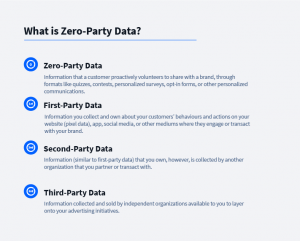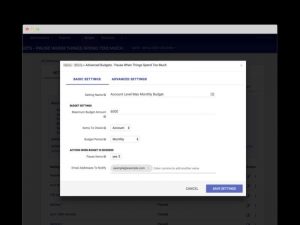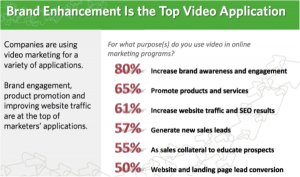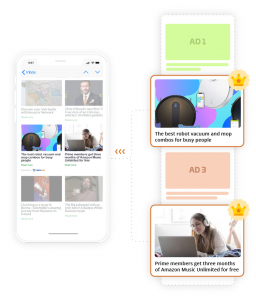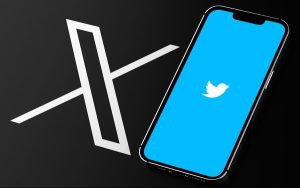 Sales and marketing have evolved into business development. Why shouldn’t recruiting mature into talent acquisition development?
Sales and marketing have evolved into business development. Why shouldn’t recruiting mature into talent acquisition development?
It’s difficult to pinpoint when organizations started using the term “business development.” Some historians tie the concept to the young enterprise models spawned by the Industrial Revolution. Others, perhaps more accurately, place its origins in the early 1990s. What’s important is the idea itself, and how it’s transformed the way companies attract and retain customers. Business development is holistic. It’s an approach that incorporates traditional aspects of marketing, advertising and sales — and then integrates relationship management, branding, expansion across markets, inbound marketing, and vertical sales in parallel with organic growth. Business development is internal and external. It transcends a variety of departments and skill sets, such as finance, legal, operations, research and development, and customer relations.
More than a narrow focus on sales or marketing alone, business development has proven to be a powerful avenue to growth, sustainability and profitability. One reason is because business development, by its nature and structure, can thrive during periods of change. That’s critical today, especially as technology continues to alter the purchasing and shopping habits of consumers. So why aren’t we patterning our recruitment efforts this way? The same technologies and market dynamics are also reshaping the job search habits of candidates. Perhaps it’s time we stop thinking of hiring in terms of sourcing or recruitment and develop a total talent acquisition approach inspired by business development practices.
Changes in Consumer Behavior Reflect Similar Changes in Candidate Behavior
At the end of December 2015, Gartner Research Director Robert Hetu astutely identified how changes in shopper behavior have permanently transformed the retail industry: “The traditional role of the retailer as the expert on products, trends and styles has significantly eroded. Consumers learn about and experience products through social and other forms of media and then focus on price and availability to make the acquisition decision.” In short, impulse shopping is going away. “Mission shopping,” as Hetu puts it, has taken over.
- Consumers visit brick-and-mortar establishments less frequently, which means they also no longer turn to a store’s in-house staff for advice or product guidance.
- They know what they want to purchase and from what type of retailer. Ads have less impact in attracting mission-centric customers.
- Modern consumers rely heavily on peer reviews and ratings from social media, like Yelp, to influence their decisions.
- They also rely on those same digital interactions to ask for advice, opinions and recommendations — and not from a company’s sales associates; they’re consulting other shoppers.
- A company’s brand is crucial, and it’s now established, in large part, by the reputation it gains from its customers and employees.
When you really start analyzing these characteristics, it becomes difficult to ignore how much they mirror the behaviors of modern job seekers.
- Talent aren’t visiting staffing agency offices, reading printed want ads, or spending as much time on Monster or CareerBuilder. They’re interacting with recruiters through social networks, mobile apps and even SMS messaging.
- Top candidates are identifying the jobs they want and targeting their searches to specific employers — they’re no longer browsing job boards to see what pops.
- They rely heavily on social media, like Glassdoor, to influence their decisions. Negative reviews from past and present employees carry as much weight as those that evangelize the organization.
- They are less attracted to opportunities from job postings and ads — they want a strong sense of connection with a company’s culture, promoted through a compelling employment brand and career page.
Candidates Are Customers
Like modern consumers, today’s job seekers know what they want. They’ve transformed into mission shoppers rather than impulse buyers, to use Hetu’s example. Finding the talent you need isn’t significantly different than wooing new customers. As Decision Toolbox CEO Kim Shepherd points out, the sales process aligns well with modern recruitment necessities: “The first step is to treat candidates as customers — not only because it will help land talent, but also because every candidate is, in fact, also a potential customer. That means nurturing every candidate who sends a résumé.”
In a business development approach to staffing, recruiting professionals think of prospective talent as leads that need to be enticed and nurtured:
- Define a meaningful value proposition — give the candidate a reason to consider leaving his or her current position for one that offers a better culture, closer alignment with personal and professional aspirations, opportunities to develop new skills or advance, and more.
- Refine the value proposition into a message that has impact and a hook.
- Get that message out through every channel that matters.
- Manage leads, stay in contact with them, and follow through until the deal is closed.
- Use applicant tracking systems the same way business development professionals use CRMs: develop a pipeline, measure leads through analytics, monitor conversion rates, and use the data as business intelligence for honing processes and forecasting.
Stay Connected
The most effective business development professionals stay connected to their leads. Exceptional talent acquisition leaders do, too. Although a growing majority of consumers no longer seek out in-store salespeople for product advice, businesses that manage the same process through social media are thriving. This also applies to recruiting. Today, most job hunting and candidate sourcing activities take place through social networks that keep talent integrated with their peers, employers, recruiters and society.
Right now, 71 percent of U.S. adults own a smart device. They shop through them, communicate through them, and they conduct their job searches through them. We’re not just describing a millennial propensity. As it stands, 54 percent of people between the ages of 44 and 54 use mobile devices to find jobs. Even more fascinating is that 35 percent of adults over 55 are doing the same.
Your Brand is Your Business
A compelling brand is mission critical today — for your business, its products and its employment culture. Never before in history have all of these components become so intertwined. Social reviews do more now to influence your reputation. Consumers obviously won’t shop at an establishment that has negative reviews about its products or services. Yet now, many people shun organizations perceived as treating their talent poorly. Likewise, talent don’t seek positions with companies whose missions, products and services they can’t endorse. For that reason, having employee evangelists as brand ambassadors has become as imperative as five-star customer reviews — for attracting exceptional workers and customers alike.
Hootsuite’s #FollowTheSun campaign capitalized on this concept by tapping into a different type of social media to augment hiring efforts. A few months ago, the company decided to use a video sharing service called Periscope to showcase its employment culture to prospective talent around the globe. Workers of all levels across the enterprise used streaming video to highlight the business culture, working environment and colleagues.
A bold and refreshed company career page is equally essential. One of my favorites is Mindvalley’s talent-centric career page. The site creates its employment brand by showcasing the people who work there. It’s packed with photos of employees working happily in comfortable settings. And it bolsters this positive impression with testimonials that depict innovative perks and incentives, unique events focused on growth and rewards, and a slew of videos that provide amazing insight to a culture anyone would want to be a part of. Mindvalley doesn’t stop there. It outlines a simple and streamlined application process, supports mobile apps, and encourages its talent to post their experiences with the company on its blog.
Best Practices
There’s really no end to the recruitment possibilities in a model inspired by business development methods. Creativity, commitment, drive and engagement win the day. With all that said, though, I’ll leave some best practices to consider, tailored to recruitment from successful business development initiatives.
- Design a repeatable process that can still be customized to each candidate.
- Create consistent messaging that stands out from your competitors.
- Focus on pipeline development and understand the possible outcomes.
- Define your market: attempting to be all things to all people can only dilute your brand.
- Know your prospects’ key drivers.
- Know the industry, along with the prevailing regulations, standards and performance metrics that will affect candidates in the role for which you’re hiring.
- Know your competitors.
- Define expectations and terms.
- Document all the stages of your recruitment cycle.
- Utilize tools for each stage in the cycle.
- Be prepared and organized.
- Know your client and candidate needs intimately.
- Be a truly consultative business partner who listens attentively — not one who pushes positions on candidates or clients that will not benefit them.
If you’re attending this year’s VMSA Live event, I would love to meet with you to discuss these and other concepts. Please join me in Florida on Wednesday, February 10, for an engaging and interactive discussion about the evolution of total talent acquisition. My first speech, “Crowdstaffing: A bold and disruptive model for hiring success,” takes place at 11:30 a.m., followed at 1:15 p.m. by my interactive session on “Trends, Disruptors and Technology.” I look forward to seeing you there!Click to edit your new post…
Business & Finance Articles on Business 2 Community(59)

